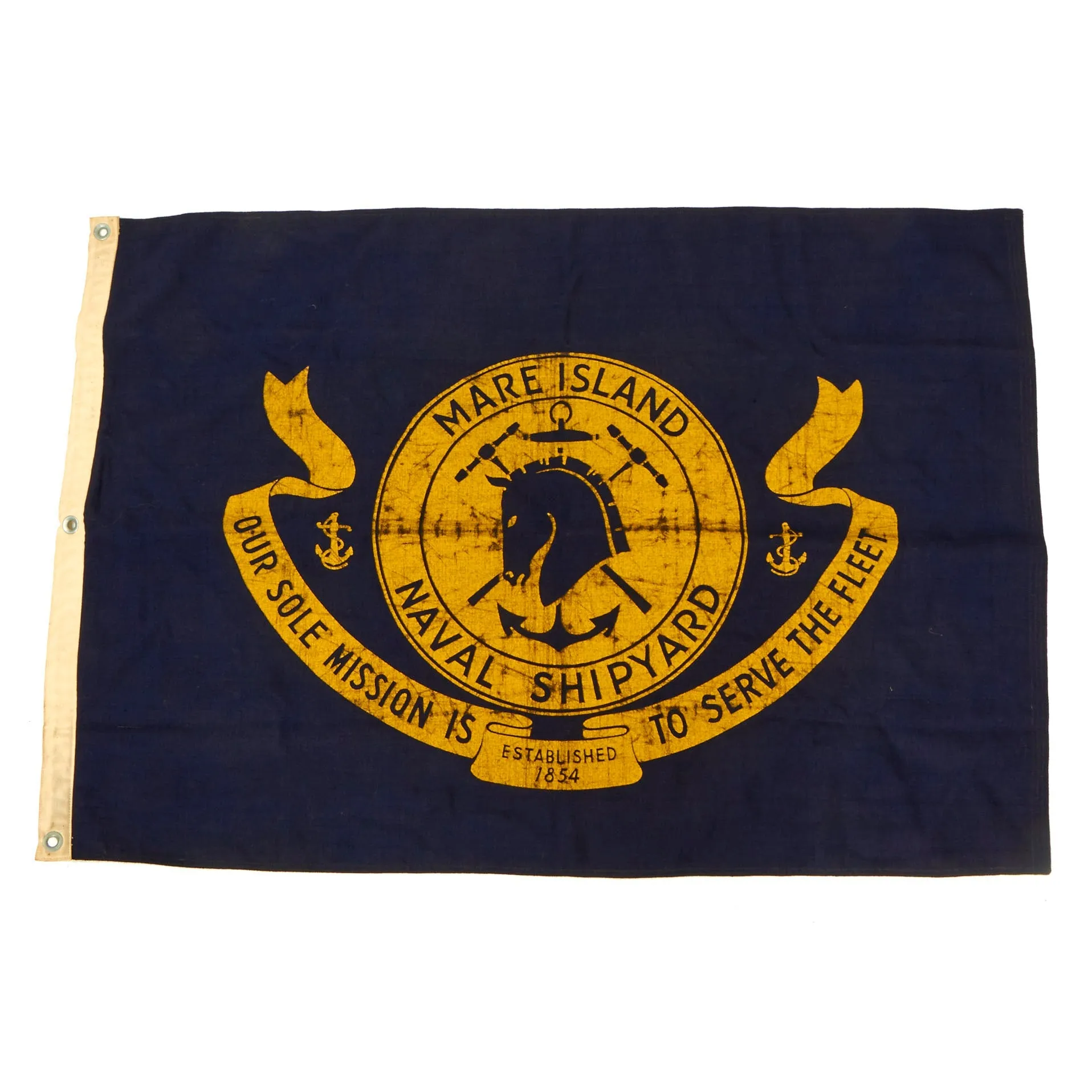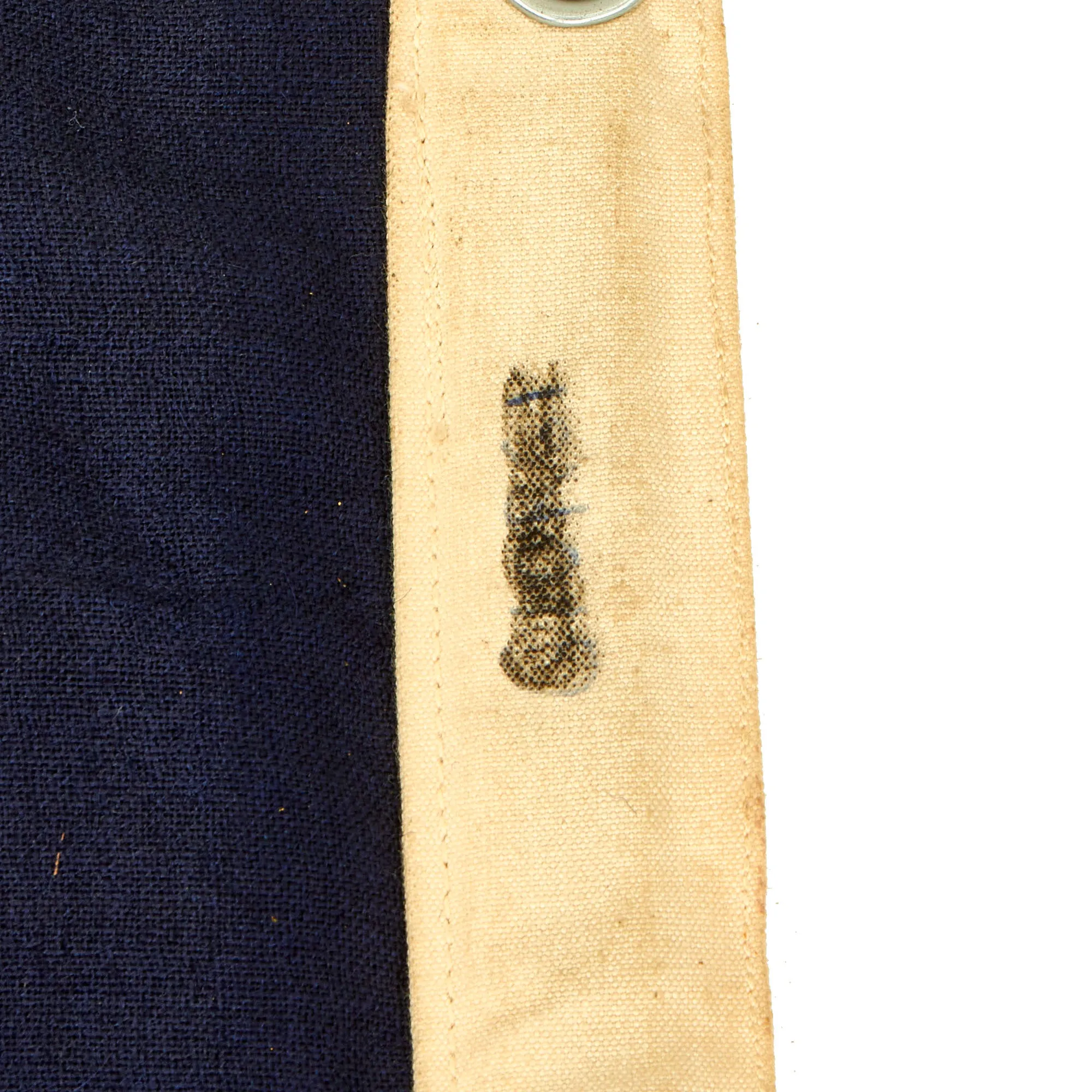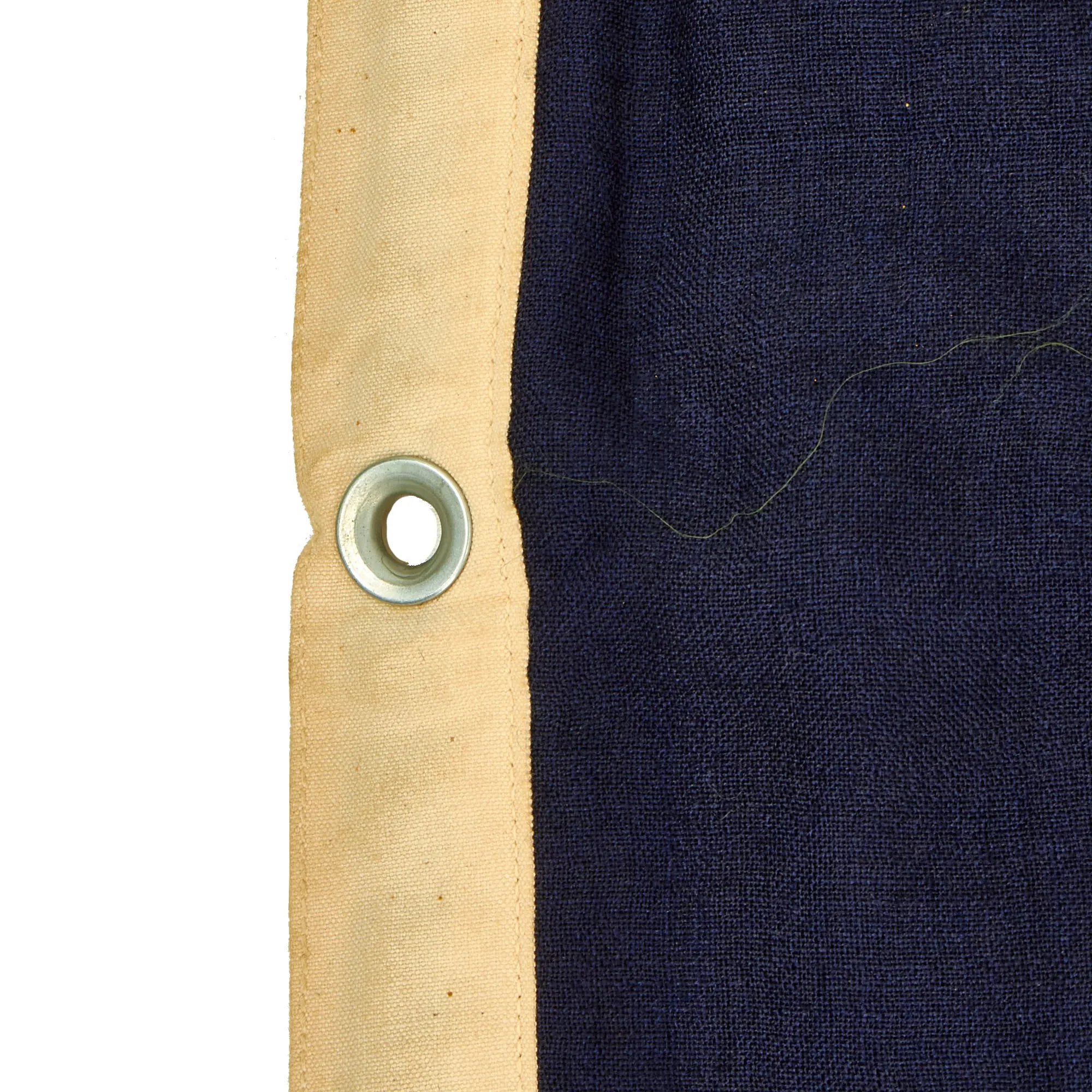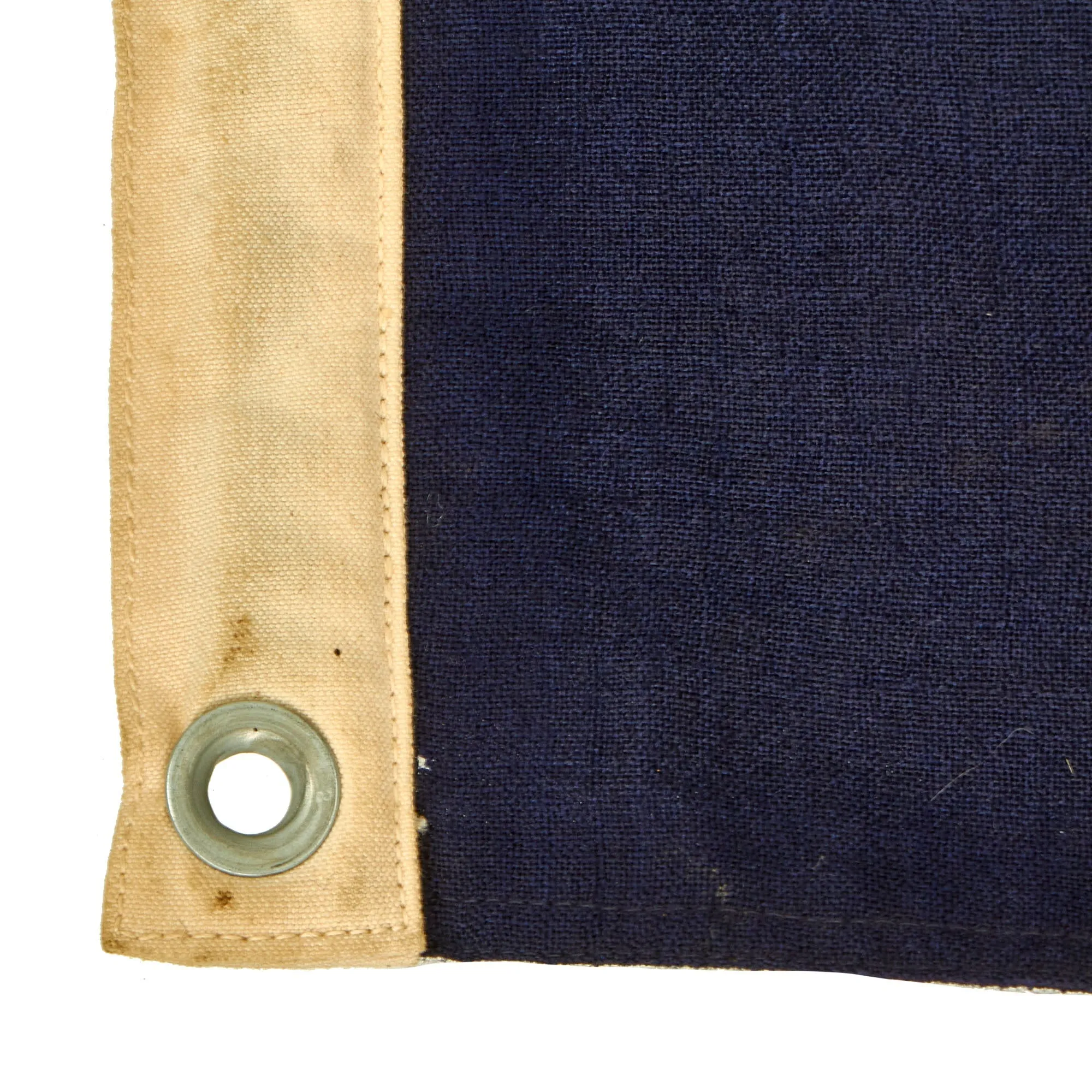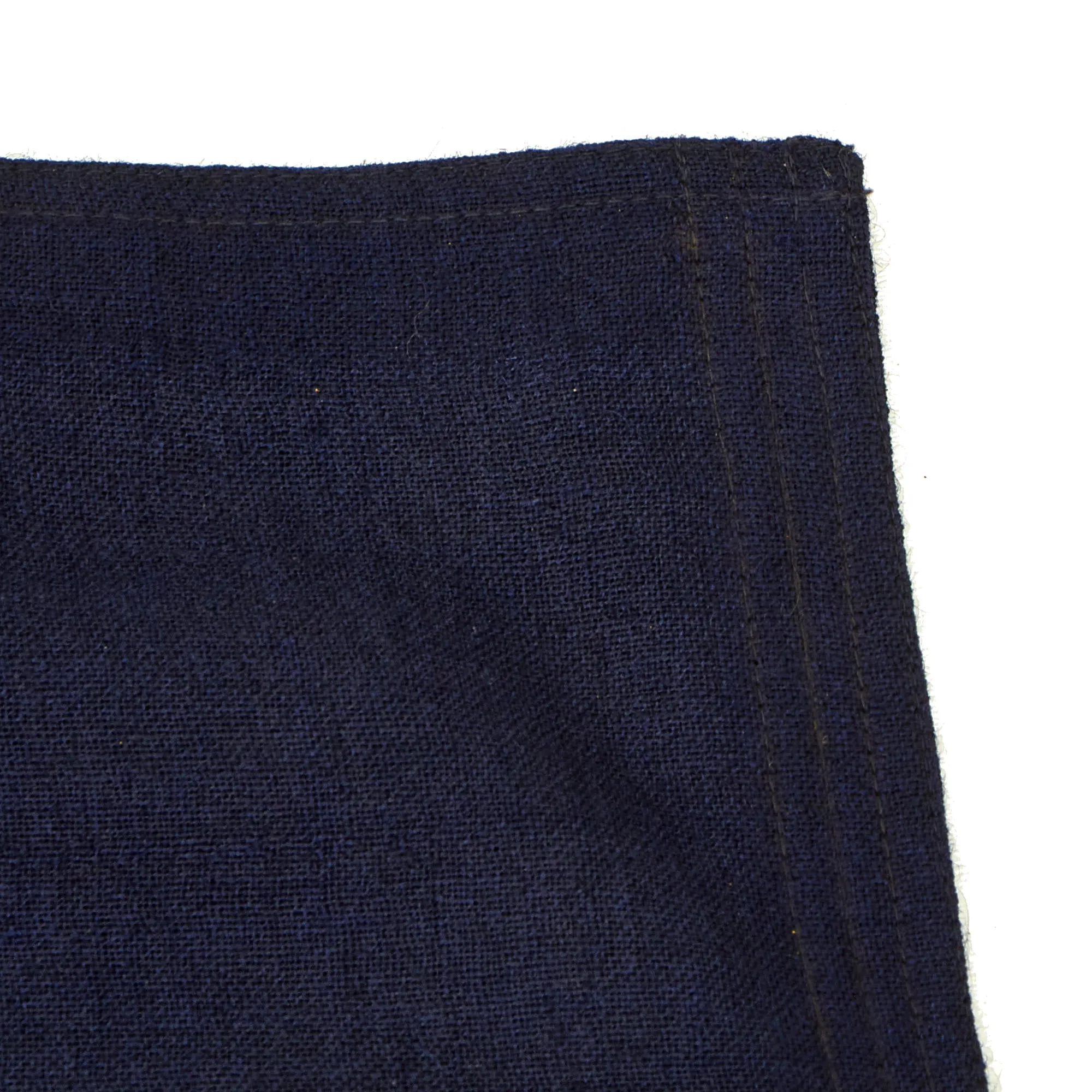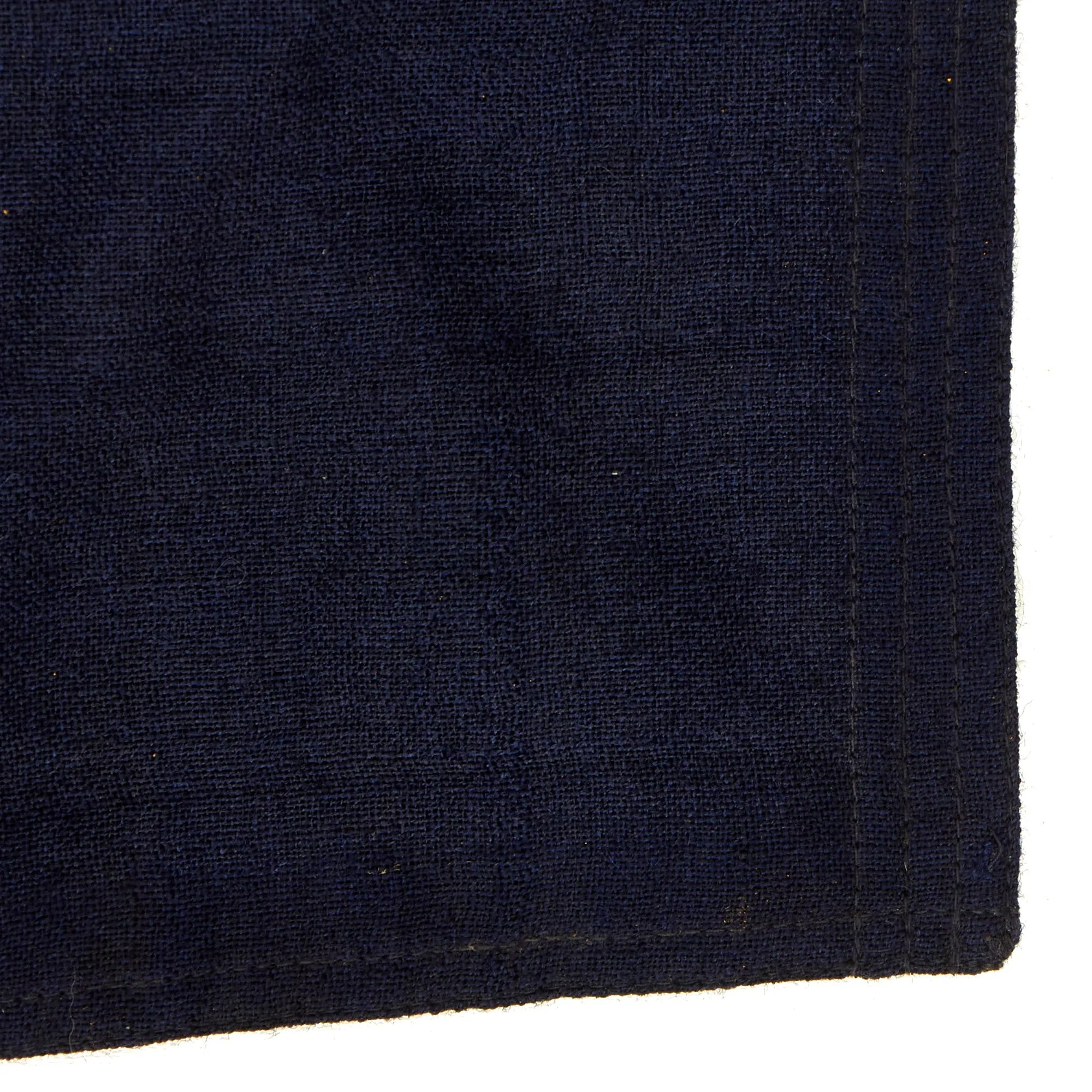Original Item: Only One Available. This is an excellent example of a rather rare Mare Island Naval Shipyard “Installation” flag. The flag is constructed of heavy wool/canvas material with thick yellow paint used for the insignia.
The Mare Island Naval Shipyard (MINSY) was the first United States Navy base established on the Pacific Ocean. It is located 25 miles (40 km) northeast of San Francisco in Vallejo, California. The Napa River goes through the Mare Island Strait and separates the peninsula shipyard (Mare Island, California) from the main portion of the city of Vallejo. MINSY made a name for itself as the premier U.S. West Coast submarine port as well as serving as the controlling force in San Francisco Bay Area shipbuilding efforts during World War II.
The base closed in 1996 and has gone through several redevelopment phases. It was registered as a California Historical Landmark in 1960, and parts of it were declared a National Historic Landmark District in 1975.
The flag is in wonderful condition and is presented without any extensive damage. Comes more than ready for further research and display.
In September 1849, Lieutenant Commander William Pope McArthur was placed in command of the US survey schooner Ewing, which had been brought around Cape Horn to the West Coast by Lieutenant Washington Allon Bartlett. Upon reaching San Francisco, Ewing and the other ship assigned to the survey, USS Massachusetts, were hampered from progress due to desertions of their crews to the gold fields, including a mutiny when crew members rowing into the city from Ewing threw an officer overboard in an attempt to desert. They managed to survey the Mare Island Strait[6] before steaming to Hawaii to obtain crewmen from Hawaiian monarch King Kamehameha III. They returned to San Francisco in the spring of 1850 with the coastal survey of northern California beginning on 4 April 1850 and continued up to the mouth of the Columbia River. On 1 August 1850, while still in Oregon, McArthur purchased a 1⁄16 interest in Mare Island for $468.50 then returned to San Francisco later that month to prepare charts and write reports.
On 15 January 1852, Secretary of the Navy William A. Graham ordered a Naval Commission to select a site for a naval yard on the Pacific Coast. Commodore D. Sloat along with Commodore C. Ringgold, Simon F. Blunt and William P.S. Sanger (former overseer of construction of Drydock Number One, Norfolk Naval Shipyard) were appointed to the commission. On 13 July 1852, Sloat recommended the island[9] across the Napa River from the settlement of Vallejo.
The Navy purchased the original 956 acres (387 ha) of MINSY on 4 January 1853. McArthur's family share (he had died a few months after purchasing an interest in Mare Island) was $5,218.20. The Navy commenced shipbuilding operations on 16 September 1854 under the command of then-Commander David Farragut, who later gained fame during the U.S. Civil War Battle of Mobile Bay, when he gave the order, "Damn the torpedoes, full speed ahead!" MINSY served as a major Pacific Ocean repair station during the late 19th century, handling American as well as Japanese and Russian vessels in the course of duty.
In 1861, the longest lived of the clipper ships, Syren, was brought to Mare Island Navy Yard for $15,000 of repairs. Syren had struck Mile Rock twice while trying to sail out of the Golden Gate.
Marines first arrived for duty in 1862 under the command of Maj Addison Garland, who was the first officer to command the Marine barracks on the island.
Mare Island Naval Shipyard also took a commanding role in civil defense and emergency response on the West Coast, dispatching warships to the Pacific Northwest to subdue Native American unrest. MINSY sent ships such as Wyoming south to Central America and the Panama Canal to protect US political and commercial interests. Some of the support, logistics and munition requirements for the Spanish–American War were filled by Mare Island. MINSY sent men, materiel and ships to San Francisco in response to the fires following the 1906 earthquake. Arctic rescue missions were mounted as necessary. Ordnance manufacturing and storage were two further key missions at MINSY for nearly all of its active service, including ordnance used prior to the American Civil War.
In 1911, the Marine Corps established two West Coast recruit training depots first at Mare Island, the second at Puget Sound, Washington. Mare Island eventually became the West Coast's only recruit training facility when the Puget Sound operation consolidated to the San Francisco Bay Area in 1912. Instructors trained recruits there until 10 August 1923, when they relocated to the Marine Corps Recruit Depot San Diego. The Marine Barracks Mare Island remained.




